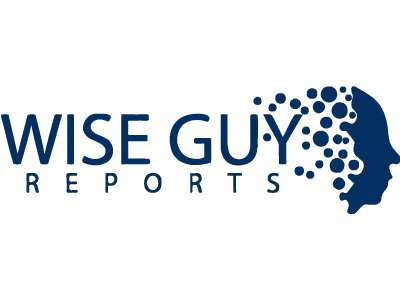Chemicals Industry Today
Fabric Hot Glue Stick Market Projected to Expand at 5.16% CAGR, Surpassing USD 2.5 Billion by 2032
The global Fabric Hot Glue Stick market, a key segment of the textile and apparel manufacturing industry, is poised for remarkable growth over the forecast period 2024-2032. Driven by rapid advancements in bonding technologies and increasing demand from the garment and technical textiles sectors, the market is expected to register a compound annual growth rate (CAGR) of approximately 5.16%, rising from an estimated USD 1.59 billion in 2023 to nearly USD 2.5 billion by 2032.
This growth trajectory is fueled by the escalating need for eco-friendly, efficient, and durable fabric bonding solutions that reduce production time while maintaining garment quality. Hot melt adhesives (HMAs) designed specifically for fabric applications are replacing traditional sewing and stitching processes across a spectrum of end-use industries, including fashion apparel, automotive textiles, home furnishings, and industrial fabrics.
Market Segmentation by Type: Hot Melt Adhesive Variants
The market is segmented into several types of Fabric Hot Glue Stick, each catering to distinct bonding requirements:
- Ethylene Vinyl Acetate (EVA) Based Adhesives: Representing a significant share of the market, EVA-based adhesives are prized for their flexibility and strong bonding properties. They are widely used in lightweight fabrics such as cotton, polyester, and blends, particularly in the apparel and home textile sectors.
- Polyamide-Based Adhesives: Known for superior heat resistance and chemical stability, polyamide adhesives are preferred in industrial and automotive textiles where durability under stress and temperature variation is critical.
- Polyurethane (PU) Based Adhesives: Offering excellent elasticity and adhesion to synthetic fibers, PU-based hot melts are gaining traction in technical textiles and performance wear manufacturing.
- Polyolefin-Based Adhesives: These adhesives deliver excellent water resistance and bonding strength, ideal for outdoor fabrics and protective clothing.
- Other Types: This category includes specialty adhesives like metallocene-catalyzed hot melts and reactive hot melt adhesives, which provide enhanced performance for niche applications such as medical textiles and footwear.
Download Exclusive Sample Copy of this Report here: https://www.wiseguyreports.com/sample-request?id=565471
Application Spectrum: Diverse Fabric Bonding Needs
Fabric hot melt adhesives find extensive application across multiple sectors:
- Apparel and Fashion: The demand for seamless garments, sportswear, and functional clothing is boosting the adoption of HMAs. The fast-paced fashion industry favors these adhesives for their rapid curing times and clean finishes.
- Home Furnishings: Upholstery, curtains, carpets, and mattresses are increasingly utilizing hot melt adhesives for fabric bonding, enabling efficient manufacturing and improved product longevity.
- Automotive Textiles: The automotive sector's shift toward lightweight and durable interiors propels the need for high-performance hot melt adhesives, especially polyamide and PU types, to bond fabric components securely.
- Technical Textiles: Protective clothing, filtration materials, and geotextiles benefit from the advanced adhesive properties required to withstand harsh environments.
- Footwear and Leather Goods: Hot melt adhesives enable seamless bonding in shoe manufacturing and leather applications, improving durability and aesthetics.
Regional Market Outlook: Growth Hotspots
Asia-Pacific remains the dominant region in the fabric hot melt adhesives market, accounting for over 45% of global demand in 2023. The region benefits from a robust textile manufacturing base, especially in China, India, and Southeast Asia, where low labor costs and increasing investments in textile machinery drive the adoption of advanced adhesives. The region’s market size was valued at approximately USD 370 million in 2023, and is projected to grow at a CAGR of 8.3% through 2032.
North America and Europe follow, with mature markets driven by innovation in sustainable and bio-based hot melt adhesives. The US and Germany, in particular, lead in R&D and applications in technical textiles and automotive sectors. Europe’s focus on green adhesives with low volatile organic compounds (VOC) is anticipated to shape market trends significantly in the coming years.
Market Drivers and Trends
- Sustainability Focus: Increasing environmental regulations and consumer awareness about ecological impact are propelling the development and adoption of bio-based and recyclable fabric hot melt adhesives. Companies are innovating formulations based on renewable raw materials like bio-polyols to reduce carbon footprints.
- Technological Advancements: The integration of nanotechnology and enhanced polymer chemistry in hot melt adhesives is improving bond strength, elasticity, and temperature resistance, thus widening application areas.
- Industry 4.0 and Automation: The textile industry’s move toward automated production lines emphasizes the need for adhesives that cure quickly and reliably, facilitating faster throughput and reduced waste.
- Lightweight and Performance Fabrics: The growing popularity of functional and performance textiles in sportswear and protective gear requires adhesives with superior flexibility and durability.
Competitive Landscape: Key Players and Strategies
Major global manufacturers dominating the fabric hot melt adhesives market include PVA Adhesives ,Tianjin Futaisi Chemical Co., Ltd. ,Bostik ,ITW ,Advance Adhesives ,Shanghai Yunda Industrial Co., Ltd. ,Sichuan Yongan Chemical Industrial Co. Ltd. These companies are heavily investing in research and development to launch specialty adhesives that cater to emerging fabric technologies.
Strategic mergers and acquisitions are also common as firms aim to expand their product portfolios and geographical reach. For example, recent acquisitions by Henkel in Asia have strengthened its supply chain and market presence in high-growth regions.
Buy Now & Get Exclusive Discount on this Report: https://www.wiseguyreports.com/checkout?currency=one_user-USD&report_id=565471
Challenges and Restraints
Despite promising growth, the fabric hot melt adhesives market faces certain challenges:
- Raw Material Price Volatility: Fluctuations in petrochemical feedstock prices can affect adhesive costs, impacting manufacturer margins.
- Health and Safety Concerns: Some conventional hot melt adhesives emit VOCs during application, leading to stringent regulations that manufacturers must navigate.
- Technical Limitations: Achieving perfect adhesion on diverse fabric types remains a challenge, pushing manufacturers to continuously innovate.
Future Outlook and Opportunities
The fabric hot melt adhesives market is set for dynamic expansion fueled by emerging applications in wearable electronics, smart textiles, and sustainable fashion. The advent of UV-curable and reactive hot melt adhesives promises faster curing times and enhanced bonding performance, catering to the next generation of textile products.
Increasing collaborations between adhesive manufacturers and textile producers are fostering customized solutions that optimize product performance and environmental compliance.
Translation of the Report in Different Languages:
ファブリックホットグルースティック市場 | Stoff-Hot-Melt-Klebestift-Markt | Marché des bâtons de colle chaude pour tissus | 패브릭 핫글루 스틱 시장 | 织物热熔胶棒市场
Browse Related Reports:
Medical Ultrasonic Gel Market | Japan | German | French | Korean | China | Spanish
Nickel Silver Wire Market | Japan | German | French | Korean | China | Spanish
Mineral Oil Based Paste Market | Japan | German | French | Korean | China | Spanish
Military Lubricants Market | Japan | German | French | Korean | China | Spanish
Optical Thin Film Market | Japan | German | French | Korean | China | Spanish
Share on Social Media



Other Industry News
Ready to start publishing
Sign Up today!








